GBP/USD is one of the most popular currency pairs to trade in the forex market. Admirals has a comprehensive guide to how to trade GBP/USD successfully.
GBP/USD is the third most popular currency pair to trade in the forex market after EUR/USD and USD/JPY, and it's popular for many reasons. To begin with, the United Kingdom is the fifth largest economy in the world, while the United States is the largest. Aside from that, there is a lot of liquidity and volatility in the pair, making it possible for traders to enter and exit the market rather easily. And lastly, getting information on the two countries is relatively easy compared to other countries like Norway or Brazil.
In the currency market, GBP/USD is often known as "the cable", which is a term derived from the first transatlantic cable that was laid from the US to the UK for communication purposes back in 1858. Currency quotes were some of the types of information transmitted through the system, so since then, the exchange rate between the British pound and the US dollar has been referred to as the cable.
In this article, we will arrange Admirals' guide to GBP/USD trading for beginners.
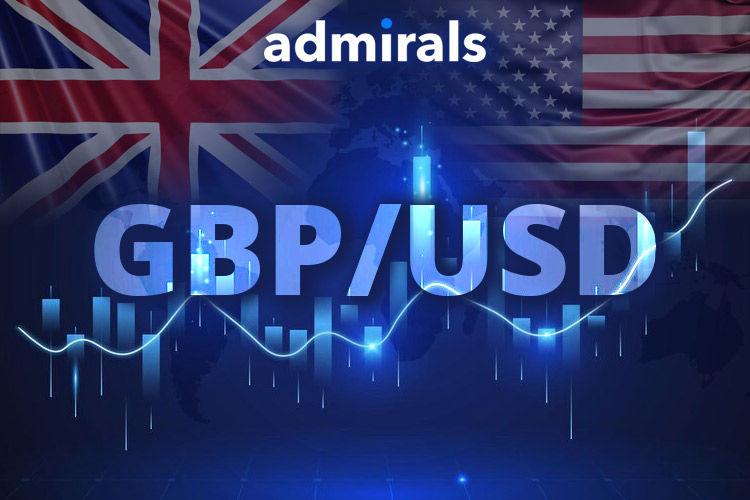
Contents
The History of GBP/USD
The GBP/USD pair has a long and rich history. Trade has been conducted between the two currencies for so long that there's no way to tell any kind of relative value for an original Pound other than to its Dollar exchange rate.
The history of GBP/USD mainly began after the gold standard. The modern GBP/USD exchange rate did not really start until the early 1970s, when both the US and the UK switched to the floating exchange rate. Admiral Markets noted that prior to the 1970s, the forex rate of the British Pound and many other currencies were heavily tied to the value of gold. This was part of the Bretton Woods agreement that took place in 1944.
Jumping forward to 2016 brings us to the Brexit vote. We can see from the historical data that the vote left a huge impact on the value of the British pound. The Brexit vote caused GBP to reach its lowest point in 30 years of forex historical data. In fact, it is the weakest GBP/USD exchange rate since 1985. The main difference is that in the 1980s, it was more about the Dollar's strength, while in 2016, it was all about the Sterling weakness.
Another historical moment called "the Sterling flash crash" happened in late 2016. During this time, the Pound moved 6% lower against the Dollar in just a matter of minutes. While the exact cause is still debatable, such an event was enough to shake the currency market for a while.
The main takeaway from the history of GBP/USD is that there is no way to predict what will happen to this pair. Despite its high liquidity, the market is still full of uncertainty. Thus, every GBP/USD trader needs to be prepared for anything and learn how to properly manage trading risks.
See Also:
How the GBP/USD Exchange Rate Works
When trading GBP/USD, the pound is the base currency and the dollar is the quote currency. The quotes of this pair basically shows the number of US dollars needed to buy one British pound. So, let's say the price of GBP/USD is 1.2400. If you want to buy GBP/USD, then you need 1.24 USD to buy 1 GBP. But if you want to sell GBP/USD, then you will receive 1.24 USD for every 1 GBP.
A unit of measurement in forex trading is called a pip, whose value is 0.0001 of the quoted price. So, if the price moves from 1.24587 to 1.24597, this means one pip move. Now, the difference between the bid/ask price is called the spread. This is a part of the trading cost, so the wider the spread, the higher the cost.
See also: Lowest Spread Forex Brokers for GBP/USD
Best Time to Trade GBP/USD
When trading GBP/USD, timing is highly important. Many traders believe that the best time to trade GBP/USD is during the major session opening hours, even though you can technically trade GBP/USD 24 hours a day, five days a week. According to Admiral Markets, Here are the prime market sessions to trade GBP/USD:
- London opening hour (07:00 London time): During this time, volumes will start to pick up as market participants digest the events during the late US and Asian market sessions. Thus, you will see the momentum starting to build at this time which also coincides with the European market opening. Major breakouts usually occur during this time.
- New York opening hour (07:00 New York time): The market is most busy during the intersection of the European and American sessions, so it's often seen as the best time to trade liquid pairs like GBP/USD. The crossover is usually associated with the continuation of the moves observed in the European session.
The volatility is usually high during the early session of the European and American sessions because that's when the most economic numbers that might affect the prices are released. Meanwhile, the Asian session is usually associated with low volatility.
See Also:
Factors Impacting GBP/USD
In order to successfully trade GBP/USD, the most important thing to do is to understand the two economies and the factors that could influence the exchange rates. Without such knowledge, you won't be able to make proper trading decisions. The followings are the key fundamentals and economic indicators to consider:
- The UK and the US economies: International demand for a currency typically moves toward economies that are growing strong. So, when the UK economy is looking strong and the US economy is weakening, this might lead to GBP/USD exchange rate rising and vice versa.
- Bank of England (BoE) policy: Each month, the UK's central bank meets to release the BoE Monetary Policy Summary report which highlights the reasons why the bank decided to either cut, increase, or hold interest rates. More often than not, a currency will fall after an interest rate cut and vice versa.
- Political events: Political events like the Brexit vote or government elections could lead to major movements in a currency. This is why traders need to stay updated with the latest political and economic news of the two countries.
- Economic data: Aside from the factors above, there are also smaller economic data that could influence GBP/USD exchange rate in the short term. This mostly consists of economic announcements like retail sales, inflation, employment numbers, and more.
How to Trade GBP/USD
There are countless approaches that you can use to trade GBP/USD. For instance, many short-term traders like to day trade around high-impact news releases in an attempt to capture the volatility following the announcements. Meanwhile, long-term traders tend to track news announcements that could impact GBP/USD in order to identify potential trends to trade.
Furthermore, GBP/USD is one of the best pairs to trade using technical analysis. This is mainly due to the high correlation between the two currencies. The process involves looking at historical price movements and identifying patterns to determine what might happen in the future. Most technical traders would use technical indicators to help them make informed decisions and spot confirmation signals on the chart.
One of the tools that you can use to trade GBP/USD is Admiral Markets' MetaTrader tools, the Supreme Edition plugin. It can give you quick information on the bullish/bearishness of the currency pair on multiple timeframes and indicators.
Admiral Markets is a forex and CFD brokerage that has been operating since 2001 to provide smart financial answers for traders around the globe. Their main services revolve around 3 key activities: Learning, Trade, and investing. In doing so, they have many registered subsidiaries, including Admiral Markets UK Ltd, Admiral Markets Pty Ltd (Australia), Admiral Markets AS Jordan Ltd, Admiral Markets Cyprus Ltd, Admirals SA (Pty) Ltd (South Africa), and Aglobe Investments Ltd (Seychelles) for the worldwide market.

 Maximize Your Earnings with 100% Deposit bonus
Maximize Your Earnings with 100% Deposit bonus Dedicated FREE FOREX VPS
Dedicated FREE FOREX VPS Free FOREX Virtual Private Server
Free FOREX Virtual Private Server MT4 Demo Contest, Get $500
MT4 Demo Contest, Get $500 Sign Up for an Account, Claim 60% Deposit Bonus
Sign Up for an Account, Claim 60% Deposit Bonus Free MT4/MT5 VPS 2024
Free MT4/MT5 VPS 2024 Send E-mail and Get Free Merchandise
Send E-mail and Get Free Merchandise $1K Refer a Friend Bonus for Pepperstone Pro clients
$1K Refer a Friend Bonus for Pepperstone Pro clients Trade to Win, $5,000 Monthly Demo Contest
Trade to Win, $5,000 Monthly Demo Contest Claim 30% + 15% Deposit Bonus from LiteFinance
Claim 30% + 15% Deposit Bonus from LiteFinance
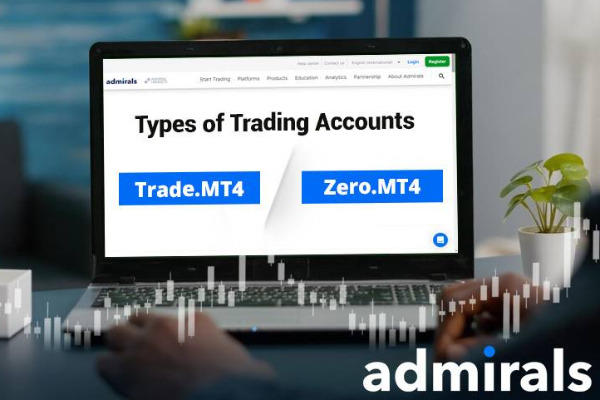

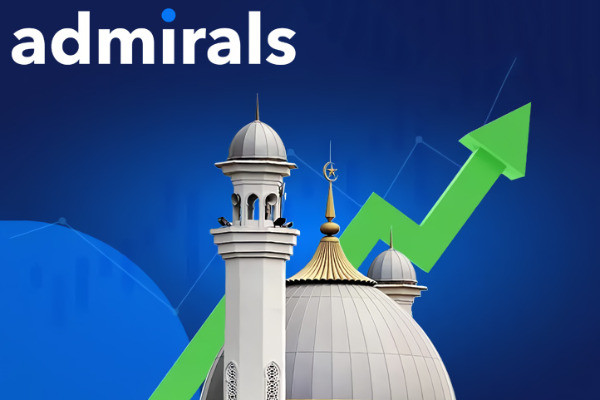
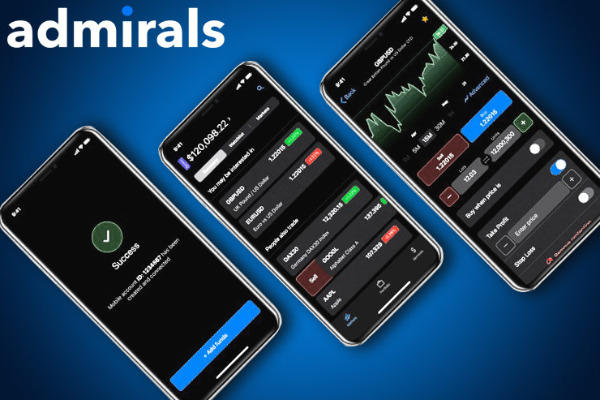
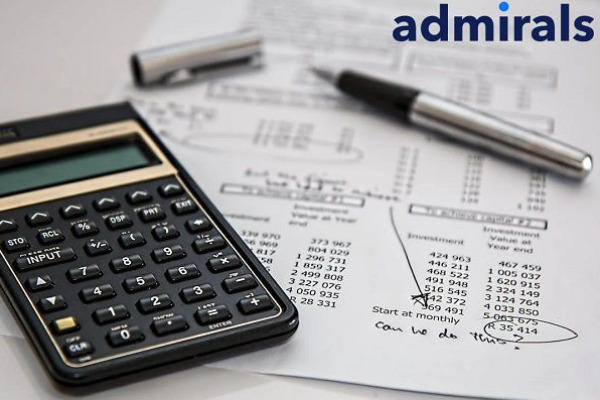


30 Comments
Tobey
Apr 10 2023
Regarding the trading style suitable for GBP/USD, is scalping a viable option since the article suggests that GBP/USD can be traded using a short-term strategy?
I have noticed that the spread offered by most brokers for GBP/USD is similar to that of EUR/USD. I am curious about the reason behind this, especially since the UK has left the EU, and not everyone uses GBP, particularly in Europe where the majority prefer EUR. Nonetheless, GBP remains a strong currency and can still compete with the Euro.
Harry
Apr 12 2023
Hey! it is true that the spread offered by most brokers for this currency pair is similar to that of EUR/USD. This is because both currency pairs are among the most widely traded in the forex market, which means that they have a high level of liquidity and trading activity. The spread is determined by the difference between the bid and ask prices of a currency pair, and a high level of liquidity can help to keep the spread tight.
As for the strength of the GBP after the UK's exit from the EU, it is true that the GBP has faced some challenges in the aftermath of the Brexit referendum. However, it is still one of the major currencies in the world and has a long history as a global reserve currency. In addition, the UK has a strong economy and financial system, which helps to support the value of the GBP. While the EUR is certainly more widely used in Europe, the GBP remains an important currency in global trade and finance.
Troy
Apr 10 2023
I know that GBP/USD has been popular for a while now because I've seen many traders talking about it in forums and stuff. However, since I just started digging into forex lately, I still can't exactly pinpoint why the pair is considered the best among others. I mean, there are several other major pairs right, like EUR/USD, AUD/USD, etc. Since I'm not from the UK or the US, I'm wondering whether I should trade GBP/USD for the potential profit and stability or should I just stick with currencies that I'm more familiar with. Any suggestion would be appreciated, thanks!
Mia F.
Apr 11 2023
First of all, I personally don't think that GBP/USD is THE best pair out there compared to others. In fact, according to Statista Research Department and a few other sources that I found, it is the third most traded currency pair in 2022 after EUR/USD and USD/JPY. However, this doesn't dictate that GBP/USD is less/more profitable than other pairs in any way. The pair is highly popular due to its high volatility and liquidity, so it can be a good choice as long as you can execute your trades well.
If you are planning to trade GBP, I suggest you learn more about the two currencies first as well as the characteristics of the two economies. This will help you to understand the market tremendously.
Manny Bee
Apr 11 2023
There are several factors that could explain why many traders are attracted specifically to GBP/USD. The answer is mainly because the pair often demonstrates a wider price range compared to other major currency pairs. GBP/USD prices tend to react more impulsively and can be highly unpredictable, which eventually leads to high volatility (sharp and big price movements).
GBP/USD is able to provide traders with a good amount of pips with one simple move, which makes it an excellent pair for breakout trading in my opinion. However, one should also be aware of the risks associated with this type of trading, so I would recommend you to place take profit/stop loss at a greater distance than usual due to the potential large swings. Oh and watch out for fake signals and false breakouts as well.
Julie
Apr 10 2023
So, I've been meaning to trade GBP/USD but still couldn't decide what strategy to use. I'm looking for a simple but effective approach that doesn't require much management because I don't have much time to watch the screen all the time. Any recommendation? Thank youuu.
Rafe
Apr 11 2023
You should try using correlation strategy, which is basically a strategy where you trade based on the correlation of two or more currency pairs. Most currency pairs, especially major ones, are interdependence. A positive correlation indicates that the two pairs will move in the same direction most of the time, while a negative correlation shows that the two pairs will move in the opposite direction.
Based on the historical statistics, GBP/USD has a positive and negative correlation with several pairs. One that's worth mentioning is its high positive correlation with EUR/USD. This means, if the EUR/USD is going up, there's a high chance that GBP/USD will move in the same direction. You can use this to diversify your risk while still maintaining a core directional view. For instance, instead of buying two lots of GBP/USD, you could buy one lot of GBP/USD and one lot of EUR/USD instead. Here's an article if you want to know more about this strategy: Choosing the Right Pair with HF Markets Correlation Matrix
Sandy
Apr 10 2023
It is interesting to learn about the history of GBP/USD from its inception to the present day. It has a rich history, having been around for a long time, and is even more historically significant than the current most traded currency pair, EUR/USD. I would like to ask a few questions about the comparison between EUR/USD and GBP/USD. Are the spreads in EUR/USD and GBP/USD similar to each other? Additionally, in terms of liquidity, which currency pair is more liquid between EUR/USD and GBP/USD?
Finally, which currency pair is more suitable for beginners? Thank you!
Kenny
Apr 11 2023
Hey, great question! When it comes to comparing the spreads of EUR/USD and GBP/USD, they're usually pretty similar, but it can vary depending on the broker and market conditions. As for liquidity, both currency pairs are highly traded, but EUR/USD is typically considered the most liquid due to its popularity among traders. Now, as for which currency pair is better for beginners, both EUR/USD and GBP/USD are widely traded and beginner-friendly. But, let's not forget that trading carries risks, so it's always important to start with a small account, manage your risks, and keep educating yourself to avoid potential pitfalls
Hudson
Apr 12 2023
Rather than comparing EUR/USD and GBP/USD, it is better to trade both to diversify your assets. By doing so, you can take advantage of different market conditions and benefit from price movements in each currency pair. For instance, if the market sentiment is positive towards the US dollar, you may want to trade the GBP/USD pair if you think that the British pound will gain strength against the US dollar, whereas the EUR/USD pair may not provide the same opportunities if the euro is also weak. Conversely, if the market is negative on the US dollar, you may want to trade the EUR/USD pair if you believe that the euro will strengthen against the US dollar, whereas the GBP/USD pair may not offer the same possibilities if the British pound is also weak. In short, trading both currency pairs can help you to diversify your portfolio and potentially achieve higher profits by taking advantage of different market conditions.
Mc Allister
Apr 18 2023
Is it possible to trade GBP/USD using technical analysis alone, without considering fundamental factors? The article mentions that GBP/USD is considered one of the best pairs for technical analysis due to the high correlation between the British pound and the US dollar. However, some traders believe that fundamental analysis, which considers economic and geopolitical factors, is essential for a comprehensive understanding of the market. In your experience, have you found success in trading GBP/USD solely based on technical analysis? Or do you believe that incorporating fundamental analysis is necessary to make well-informed trading decisions? Share your insights and experiences with trading this currency pair using different approaches.
Powell
Jun 27 2023
@Mc Allister: Hey there! In my experience, a balanced approach that incorporates both technical and fundamental analysis tends to yield more well-informed trading decisions. While technical analysis may provide valuable insights into price patterns and trends, fundamental analysis can help traders understand the underlying forces that drive those price movements.
By considering fundamental factors, traders can gain a deeper understanding of market sentiment and potential catalysts that could impact GBP/USD. This information can be particularly useful during major news releases or events that have the potential to cause significant volatility in the market.
Ultimately, the choice between relying solely on technical analysis or incorporating fundamental analysis depends on your trading style, preferences, and goals. Some traders find success using purely technical analysis, while others prefer a more holistic approach that includes fundamental analysis.
It's important to note that market conditions and individual experiences can vary.
Erik
May 1 2023
Hey dude, I have a question about the currency pairs in Forex. In the past, when Britain was part of the European Union, they used the Euro as their currency, just like other EU countries, right? So why do we still use the GBP/USD pair in Forex trading? Meanwhile, other EU countries like France, Spain, and others still use the Euro. I'm wondering why their currency pairs are not used in Forex trading. The same thing happens with Switzerland, where we can trade the CHF/USD pair. Can someone explain this to me?
Willy
May 3 2023
Yes, you are correct that in the past, Britain was a part of the European Union (EU) and used the euro as their currency. However, in 1992, Britain chose to opt-out of the EU's single currency project, which meant that it did not adopt the euro as its currency. Instead, Britain continued to use its own currency, the British pound sterling (GBP).
The reason why the GBP/USD currency pair is still widely used in the forex market is that the US dollar is the most widely traded currency in the world, and the British pound is one of the major currencies traded alongside the US dollar, euro, Japanese yen, and Swiss franc. This makes the GBP/USD pair a popular choice among traders and investors who are interested in trading the major currency pairs.
As for the other EU countries that use the euro as their currency, their currency pairs are also available in the forex market, but they are not as widely traded as the major currency pairs. This is because the euro is still a relatively new currency compared to the US dollar and has not yet established the same level of global dominance.
Similarly, the Swiss franc is also a major currency in the forex market, and the CHF/USD currency pair is available for trading. However, the Swiss franc is not as widely traded as the US dollar or the euro, which means that the CHF/USD pair is not as popular as the major currency pairs.
Jupp
May 1 2023
Hey there! I read an interesting article about the history of GBP/USD, and it mentioned a moment called "the Sterling flash crash" that occurred in late 2016. In just a few minutes, the Pound moved 6% lower against the Dollar, which is a pretty big deal. But it got me thinking, why does a relatively small movement like 6% have such a big impact on the forex market? And what would happen if it moved even more, like 10-20%?
I'm curious to know your thoughts on this. Thanks!
Hernan
May 2 2023
I can answer your question! The reason why even a relatively small percentage movement, such as 6%, can shake the forex market is because the forex market is a highly leveraged market, which means that traders can control large positions with relatively small amounts of money. For example, if a trader had a leverage of 100:1, they could control a position of $100,000 with just $1,000 of their own money.
When there is a sudden movement in the market, such as the Sterling flash crash, traders may start to panic and close their positions to limit their losses. This can cause a domino effect, as other traders start to do the same, which can lead to a rapid and significant shift in the market.
If the market were to move by 10-20%, it would likely cause even more panic and volatility in the market. Traders with open positions may experience significant losses, and some may even be forced to exit their positions. This could lead to a chain reaction of selling and buying, causing the market to move even more dramatically. The impact of such a movement would depend on a variety of factors, including the size and liquidity of the market, as well as the overall sentiment of traders at that time.
Jorge
May 3 2023
Another note, large price movements in the forex market can also affect brokers, especially if they have taken on significant positions or have many client trades that are affected by the market movement. If the market moves against their positions, brokers may face substantial losses, which, if not covered, can lead to bankruptcy. To reduce their exposure to market volatility, many brokers have risk management strategies, such as setting stop loss levels or hedging their positions.
Although flash crashes, where prices move rapidly in a brief period, are not frequent in the forex market, they can still have a substantial impact on the market and those involved, including brokers and traders. It's worth noting that market volatility is a natural component of trading, and it can present both risks and opportunities for traders. During periods of high volatility, it's essential to have a well-defined trading plan and risk management strategy in place to manage potential losses.
Roger
Jun 8 2023
Hey there! It's interesting that GBP/USD is considered a great pair for technical analysis due to the strong correlation between the two currencies. Technical analysis is all about studying historical price movements and patterns to predict future market behavior. Traders often rely on various technical indicators to guide their decision-making process and identify confirmation signals on the charts. However, I'm curious to know if swing trading, which involves holding positions for a few days to weeks, can effectively incorporate fundamental analysis alongside technical analysis for trading GBP/USD. Fundamental analysis looks at economic factors and news events that can impact the value of a currency. Do you think it's possible to combine these two approaches for successful swing trading on GBP/USD?
Messi
Jun 15 2023
@Roger: Hey! That's a great question. Combining fundamental and technical analysis in swing trading can definitely be a powerful approach, especially when trading GBP/USD. Let me explain why.
Swing trading involves holding positions for a few days to weeks, which provides a longer-term perspective compared to day trading. This timeframe allows for a more comprehensive analysis of both technical and fundamental factors that can influence GBP/USD.
On the technical side, swing traders can utilize various indicators, chart patterns, and trend analysis to identify potential entry and exit points. These tools help determine the optimal timing for entering or exiting a trade based on historical price movements. GBP/USD's strong correlation and liquidity make it a suitable pair for technical analysis, as patterns and trends are more likely to hold.
At the same time, swing traders can also incorporate fundamental analysis to gain insights into the underlying economic factors affecting GBP/USD. Fundamental analysis involves monitoring economic indicators, central bank decisions, geopolitical events, and news releases that impact the currencies' value. By staying informed about these factors, swing traders can anticipate potential shifts in market sentiment and adjust their trading decisions accordingly.
(read: Fundamentalists vs Technicalists: The Key Differences )
Vinicius
Jul 6 2023
Considering the numerous trading approaches available for GBP/USD, such as day trading around high-impact news releases for capturing post-announcement volatility or tracking news announcements for identifying potential trends, is it advisable for beginners to invest time in learning about MetaTrader Supreme Edition? This plugin offered by Admiral Markets provides additional tools for trading GBP/USD. Moreover, given the pair's suitability for technical analysis due to the strong correlation between the two currencies, understanding and utilizing technical indicators can be beneficial. Therefore, in the pursuit of making well-informed decisions and identifying confirmation signals on the chart, is acquiring knowledge of MetaTrader Supreme Edition necessary for beginners looking to trade GBP/USD effectively?
Benny
Jul 24 2023
Hey there! As an Asian trader in the Forex market, I've noticed that the Asian session is often less volatile compared to the European and American sessions, especially when trading GBP/USD. I'm really curious to know why that is! What factors contribute to this difference in volatility between the sessions? Why does the Asian session tend to have lower trading volumes, while the European and American sessions experience higher volatility during their early hours?
I've also read that the European and American sessions see increased volatility because of the release of economic numbers that can impact currency prices. Is there a correlation between the economic data releases and the higher volatility during these sessions? I'd love to get a better understanding of how these economic events play a role in the market movement.
haykal
Jul 25 2023
Dude, The Asian session in the Forex market is generally less volatile because during that time, traders in Europe and the Americas are not actively trading yet. The higher volatility in the European and American sessions is due to the release of important economic data that can affect currency prices. When economic numbers come out, traders react quickly, causing more significant price movements. This is why those sessions experience more active trading and higher volatility. During the Asian session, things are relatively calmer as traders in other regions are still analyzing previous market events. So, that's why you might notice the difference in volatility between the sessions when trading GBP/USD.
Tonny
Jul 26 2023
Hey! If you want to trade a volatile currency pair, consider looking for pairs that involve Asian currencies. Since the Asian session is generally less volatile compared to the European and American sessions, pairing an Asian currency with a non-Asian currency can potentially create more volatility during the overlap of the trading sessions.
For example, pairs like USD/JPY (U.S. Dollar/Japanese Yen), AUD/JPY (Australian Dollar/Japanese Yen), or EUR/JPY (Euro/Japanese Yen) can exhibit increased volatility during the European and American session overlaps with the Asian session.
Anna
Jul 24 2023
Hey there! I was reading about the Bank of England's Monetary Policy Summary report and its impact on GBP/USD trading. Can you tell me when exactly the BoE releases this report each month? I want to stay on top of the latest updates!
Also, I'm curious about the key factors highlighted in the report that influence the BoE's decisions on interest rates. What drives their choices to cut, increase, or hold interest rates?
I heard that after an interest rate cut, the currency tends to react in a certain way. Does GBP/USD usually fall or rise after an interest rate cut, and why?
On the other hand, what happens to GBP/USD after an interest rate increase? Does it typically rise or fall in response?
Are there any specific patterns or trends that traders should watch for when it comes to the BoE's interest rate decisions and how they affect the currency market?
Sayuri
Jul 26 2023
Let me help you! The Bank of England releases its Monetary Policy Summary report every month, usually around the middle of the month. This report is crucial because it sheds light on the factors that influence the BoE's decisions on interest rates. They take into account stuff like the current economic conditions, inflation levels, employment data, and how the overall economic outlook is shaping up. Plus, they keep an eye on global economic developments and geopolitical events that might impact the UK economy. When the BoE decides to cut interest rates, GBP/USD typically reacts by falling, as lower interest rates make the currency less appealing to investors. But when they increase rates, GBP/USD tends to rise because higher interest rates make the currency more attractive to investors. Traders should watch out for unexpected surprises in the report, as they can cause some wild market swings. So, it's essential to be cautious and use risk management strategies when trading during these events.
Nayla
Aug 2 2023
Dude, the Brexit vote in 2016 had a massive impact on the value of the British Pound. It caused the GBP to drop to its lowest point in 30 years of forex history, making it the weakest GBP/USD exchange rate since 1985. But what I'm really wondering is, what were the main reasons behind this significant drop in the Pound's value after the Brexit vote? How did it differ from the situation back in the 1980s when the Dollar's strength played a bigger role in exchange rates? I mean, in 2016, it seems like it was more about the Sterling's weakness. What specific factors contributed to this Sterling weakness during the Brexit vote, and how did it affect the overall performance of the British Pound? And dude, what were the broader economic and market implications of such a huge depreciation of the British Pound? I'm curious to know how it impacted international trade and investment involving the GBP/USD pair. Understanding all this will give us a better grasp of how currency markets react to major geopolitical events like the Brexit vote.
Panji
Aug 4 2023
Certainly, dude! The significant drop in the value of the British Pound after the Brexit vote in 2016 was mainly driven by uncertainty and concerns surrounding the UK's decision to leave the European Union. The Brexit vote created a high level of uncertainty about the future economic and trade relationship between the UK and the EU, leading to a loss of confidence in the British Pound. Investors and traders were worried about the potential negative impact of Brexit on the UK economy, trade, and investment.
In contrast to the situation in the 1980s, where the Dollar's strength played a more prominent role in exchange rates, the 2016 GBP drop was primarily due to the weakness of the Sterling itself. Investors perceived the British Pound as a riskier asset amid the Brexit uncertainties, causing them to sell off their Pound holdings, which further weakened the currency.
The specific factors contributing to the Sterling weakness during the Brexit vote were complex and multifaceted. Apart from uncertainty, concerns about potential trade disruptions, investment outflows, and a perceived loss of access to the EU market weighed heavily on the Pound. Additionally, political instability and internal divisions within the UK during the Brexit negotiation process also impacted market sentiment and added to the currency's weakness.
The dramatic depreciation of the British Pound had broader economic and market implications. A weaker Pound made imports more expensive, contributing to higher inflation in the UK. It also made UK exports more competitive, but the overall impact on trade and investment was mixed. Some industries benefited from the weaker currency, while others faced challenges due to supply chain disruptions and uncertain market conditions.
Read more: Tips on How to Trade GBP/USD
Sheila
Aug 2 2023
Before the 1970s, the GBP/USD exchange rate was fixed, with a long and rich history of trade between these two currencies. Could you explain how the fixed exchange rate system operated for GBP/USD during that era and its impact on international trade and economic relations between the UK and the US? What historical events or factors prompted the shift from a fixed to a floating exchange rate between GBP and USD in the early 1970s? Were there any challenges or advantages associated with the fixed exchange rate system, and how did it affect the relative values of the British Pound and the US Dollar? Additionally, what were the consequences of transitioning to a floating exchange rate system for GBP/USD and global currency markets in general? Lastly, can we derive any relevant lessons from the past fixed exchange rate system when considering current discussions on international monetary policies?
Neuer
Aug 3 2023
Allow me to explain! Prior to the 1970s, the exchange rate between GBP and USD was fixed, playing a significant role in international trade and economic relations between the UK and the US. Under the fixed exchange rate system, the value of the British Pound was linked to a specific value of the US Dollar. Both countries maintained this fixed rate by buying and selling their currencies when necessary. This system provided stability and predictability in currency values but also posed challenges during times of economic fluctuations or imbalances. In the early 1970s, both the US and the UK decided to abandon the fixed exchange rate and adopted a floating exchange rate system.
Fidel
Aug 4 2023
Before the 1970s, the exchange rate between GBP and USD was fixed, meaning the value of the British Pound was pegged to a specific value of the US Dollar. This fixed rate provided stability in currency values, making it easier for businesses to plan and trade internationally. However, it also restricted the ability of the currencies to respond to changing economic conditions and imbalances. In the early 1970s, both the UK and the US decided to abandon the fixed exchange rate system and adopted a floating exchange rate. This shift allowed the value of GBP and USD to be determined by market forces, making the currencies more flexible and responsive to economic changes. While the floating exchange rate introduced greater uncertainty and potential volatility, it also provided the opportunity for currencies to find their own equilibrium based on market conditions. As a result, international traders and investors had to adapt to the new environment and incorporate exchange rate fluctuations into their strategies. The move to a floating exchange rate system marked a significant shift in the dynamics of the GBP/USD pair and opened the door to more dynamic and market-driven currency valuations.